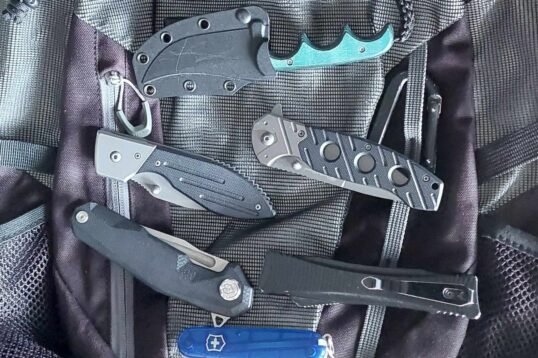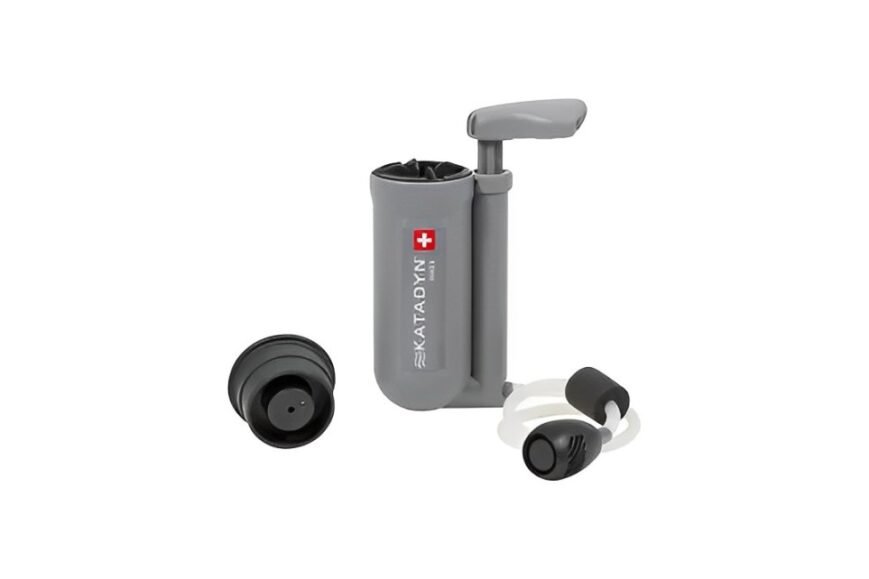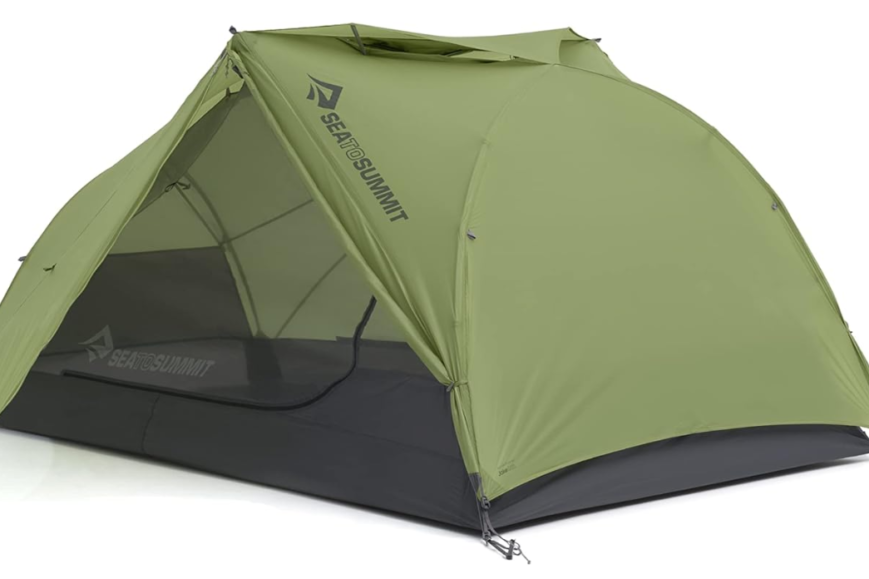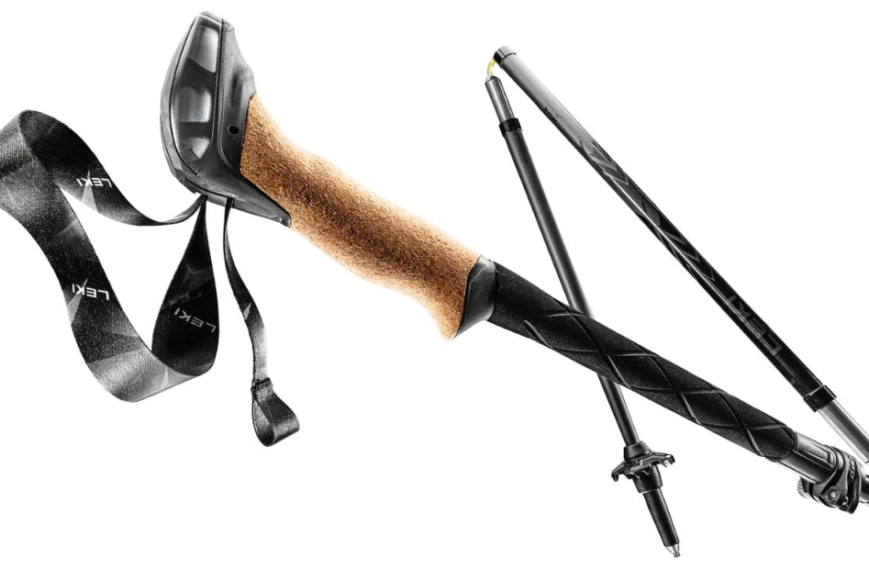Embarking on a day hike is an exhilarating way to explore the great outdoors, but the right gear can make or break your experience. One of the most critical pieces of equipment is your hiking backpack. It’s your companion carrying all the essentials you need on the trail. For beginner hikers, selecting the perfect daypack can seem overwhelming, but with a few tips, you’ll be ready to hit the trails with confidence. Here’s how to choose a hiking backpack that’s just right for your day-long adventure.
TL;DR
- Capacity Considerations: Choose a backpack with a capacity of 10-30 liters based on hike duration, weather, water needs, personal gear, and any special equipment.
- Size Guidelines: For short hikes, use a 10-20 liter pack. For longer hikes with extra gear, opt for a 20-30 liter backpack.
- Comfort is Key: Look for backpacks with padded and adjustable shoulder straps, a well-designed hip belt for weight distribution, and a comfortable, ventilated back panel.
- Proper Fit: Ensure the backpack fits your torso length and has adjustable straps. Women and youth may benefit from specially designed packs.
- Compartmentalization: Choose backpacks with multiple compartments for organization – a spacious main compartment, accessible top lid/pocket, side pockets for water bottles, and a front pocket for additional storage.
- Additional Tips: Perform trial runs with packed gear, consider modular packing, invest in scalable backpack options, and balance padding with weight for optimal load distribution.
Understand Capacity: Size Does Matter
When you set off on a day hike, the backpack you carry is your lifeline, holding all of the necessities for your journey. The capacity of hiking backpacks is a critical factor to consider, and understanding how to choose the right size can significantly enhance your outdoor experience.
Capacity Measurement
The volume of hiking backpacks is generally measured in liters, which indicates the amount of space available inside the pack to store your items. For day hikes, which typically last anywhere from a few hours to a full day, a pack ranging from 10 to 30 liters is usually sufficient, depending on several factors.
Factors Influencing Backpack Size
Here are some considerations that can help you decide on the appropriate backpack size for your day hike:
- Duration of Hike: The length of your hike is a primary factor. A short hike may only require water, a snack, and a few essentials, whereas a longer trek may necessitate additional food, water, and gear.
- Weather Conditions: Always check the forecast before heading out. If rain or colder temperatures are expected, you’ll need space for rain gear and extra layers of clothing.
- Water Needs: Hydration is vital. A good rule of thumb is to carry about half a liter of water per hour of moderate activity in moderate temperatures. However, this can vary based on individual needs, weather, and the intensity of the hike.
- Personal Gear: Consider the space needed for your personal items, such as a camera, a guidebook, a map, a compass, and a first-aid kit.
- Special Equipment: If you’re planning a hike that involves other activities like bird watching or sketching nature, you may need to carry additional items such as binoculars or a sketchpad.
Backpack Size Guidelines
To help you choose, consider the following backpack size guidelines:
- 10-20 liters: These compact packs are ideal for short, simple hikes lasting a few hours. They have enough space for water, a light snack, basic first aid supplies, and a lightweight jacket or fleece. They’re also a good choice for when you’re hiking in well-maintained trails with easy access to facilities or when you’re familiar with the trail and conditions and can pack very minimally.
- 20-30 liters: This range is the sweet spot for most day hikers. They offer ample space for extra layers, which is crucial for dealing with changing conditions. There’s also room for a larger water reservoir, additional food, and snacks, as well as room for some nice-to-have items like a camera, a compact pair of binoculars, or a small sit pad. These packs may also include features like hip belts and chest straps for added support, useful when carrying heavier loads.

Additional Tips
- Trial Runs: Before committing to a backpack size, it’s a good idea to do a trial run. Pack everything you think you’ll need for your hike and see how it fits in the backpack you’re considering. Adjust the size accordingly.
- Modular Packing: Some hikers prefer using smaller packs and supplementing with items like waist packs or vests with pockets to distribute weight differently.
- Scalability: For those who hike frequently under varying conditions, it may be worth investing in two sizes of backpacks to choose from based on the specific hike’s demands.
Choosing the right capacity for your hiking backpack is a balance between carrying enough to be prepared and not overburdening yourself with unnecessary weight. Take the time to assess your needs and choose a backpack that will carry them efficiently and comfortably, allowing you to focus on the joy of the hike itself.
Look for Comfort: Fit and Design
Comfort is indeed paramount when selecting a day hiking backpack. An uncomfortable pack can quickly turn a pleasurable hike into a challenging ordeal. To ensure your backpack won’t hinder your enjoyment of the great outdoors, let’s delve deeper into the key features that contribute to a comfortable fit and design.
Shoulder Straps
Shoulder straps are your primary connection to your backpack, so their design is crucial for comfort. Here’s what to look for:
- Padding: Adequate padding on shoulder straps prevents them from digging into your shoulders. The padding should be firm enough to cushion the load but not so bulky that it becomes cumbersome.
- Width and Contour: The straps should be wide enough to distribute weight without impinging on your neck or underarm area. An ergonomic, S-shaped contour can help the straps better fit the natural shape of your body.
- Adjustability: Straps should offer easy adjustability so you can change the fit based on the layers you’re wearing and the load you’re carrying. This helps maintain proper weight distribution and balance throughout your hike.
Hip Belt
A hip belt plays a significant role in transferring the weight of the pack from your shoulders to your hips, which are better suited to bear heavier loads. Here’s why a good hip belt is important:
- Load Transfer: A well-designed hip belt should wrap comfortably around your iliac crest—the upper part of your hip bones—and should be adjustable to ensure the majority of the pack’s weight (up to 80-90%) is supported by your legs and hips, not your back and shoulders.
- Padding: Just like with shoulder straps, the padding on the hip belt should be sufficient to cushion your hips without causing discomfort or restricting movement.
- Stabilizer Straps: Many hip belts come with stabilizer straps that enable you to adjust the load closer to your body, improving balance and control.
Back Panel
The back panel is the part of the backpack that rests against your back, and it can significantly affect your comfort level. Consider these aspects:
- Padded Back Panel: Some backpacks feature padding with channels or ridges that promote airflow and offer cushioning. This can prevent the pack from pressing uncomfortably against your spine.
- Ventilated Back Panel: Many modern backpacks have a suspended mesh design that creates a ventilation channel between your back and the pack, allowing for air circulation and reducing sweat build-up.
- Frame Sheet or Support: For carrying heavier loads, look for a backpack with a frame sheet or lightweight internal frame that helps maintain the shape of the pack and distributes the weight evenly.
Fit
A properly fitted backpack can make the difference between a comfortable hike and a painful experience. Here’s how to ensure a good fit:
- Torso Length: Backpacks often come in multiple sizes to accommodate different torso lengths. Measure the distance from the base of your neck to the top of your hip bones to find your torso length and choose a pack size that matches.
- Adjustable Straps: The backpack should have adjustable shoulder straps, hip belt, and load-lifter straps at the top of the shoulders. These allow you to fine-tune the fit according to your body size and the load you are carrying.
- Women-Specific and Youth Designs: Women and younger hikers might find that packs designed specifically for their body types offer a better fit. These packs typically have narrower shoulder widths, contoured shoulder straps, and adjusted hip belts.

Additional Considerations
- Chest Strap: A sternum strap can help stabilize the pack and distribute the weight more evenly. It also keeps the shoulder straps in place, which is especially useful during more active hiking.
- Padding vs. Weight: More padding can mean more comfort, but it also adds weight. Look for a balance that offers comfort without excessively increasing the pack’s weight.
- Load Distribution: Consider how the backpack allows you to distribute weight. Ideally, heavier items should be closer to your body and higher up in the pack to keep your center of gravity optimal for hiking.
Ultimately, the best way to test for comfort is to try the backpack on with weight in it, as this will give you the most accurate feel for how it will perform on the trail. Specialty outdoor stores often provide sandbags or other weights so you can simulate a loaded pack. Take your time adjusting all the straps and walk around the store to get a sense of the fit and comfort. Only then can you make an informed decision about which hiking backpack will best suit your needs.
Consider Compartmentalization: Stay Organized
Effective organization of your gear can streamline your hiking experience, allowing for quick access to items when you need them and helping to distribute weight evenly. A well-designed daypack will offer a variety of compartments and pockets tailored for the needs of a hiker. Let’s explore the types of compartments and pockets that can enhance your pack’s functionality.
Main Compartment
The main compartment of a daypack is the heart of your storage space. Here’s what to look for:
- Capacity: It should be spacious enough to fit the core items you need, such as extra clothing, the bulk of your food, a hydration system, and larger items that are not needed immediately but are essential for the day’s hike.
- Accessibility: Some backpacks offer panel loading, which means the main compartment can be fully zipped open like a suitcase for easy access to all your gear, as opposed to top-loading options which may require digging through items to reach the bottom.
- Internal Dividers: Some packs include dividers or separate internal pockets within the main compartment to help segregate gear for better organization and to prevent smaller items from getting lost at the bottom.
Top Lid or Pocket
The top lid or pocket of a backpack is an ideal place for certain items. Consider these aspects:
- Ease of Access: This pocket is designed for items you need to get to quickly, such as sunscreen, lip balm, sunglasses, or a headlamp.
- Security: Items in the top lid are less likely to fall out when opening the main compartment, making it a good spot for keys, a wallet, or a cell phone.
- Detachable Lids: Some backpacks have removable top lids that can be used as a waist pack for short excursions from your main camp or rest spot.
Side Pockets
Side pockets add additional convenience and accessibility:
- Elastic or Mesh Pockets: These are typically used for water bottles, but they can also hold other items like trekking poles or a compact umbrella that you might need to reach for quickly.
- Zippered Side Pockets: Some backpacks have zippered pockets that offer more security for items than open mesh pockets. They can be useful for storing smaller items that you want to keep accessible yet secure.
Front Pocket
A good front pocket can serve multiple purposes:
- Organization: It is often used for flat, slim items such as a map, field guide, notepad, or a rain cover for your backpack.
- Accessibility: Items in the front pocket can be reached without having to open the main compartment, saving time and hassle, especially if you need to access them frequently.

Additional Storage Options
Beyond the standard compartments, consider these additional features for further organization:
- Hip Belt Pockets: Ideal for small items that you want to access while walking, like energy gels, a small camera, or a GPS device.
- Daisy Chains or Attachment Loops: These can be useful for attaching gear on the outside of your pack, such as carabiners, hiking poles, or ice axes.
- Internal Sleeves: Often used for hydration bladders, these can also double as a laptop or tablet sleeve for those who want their daypack to serve multiple purposes.
- Compression Straps: These not only help to stabilize the load but can also be used to attach additional items externally.
When choosing a daypack, imagine packing it with your typical hiking gear to see if the compartments and pockets suit your needs. Organizational features should make sense for the type of hiking you do and the items you carry, without adding unnecessary complexity or weight.
Remember that while pockets and compartments are useful, over-packing them can lead to a bulky and unbalanced pack, so be mindful of how you distribute your gear.
Assess Accessibility: Quick Entry is Key
Accessibility is a crucial consideration for a hiking backpack. The ability to quickly and easily reach your gear can improve your hiking experience by minimizing frustration and downtime. Here’s how to evaluate the accessibility features of a backpack:
Panel Access
Panel access is a design feature that allows for broader entry into the backpack, beyond the traditional top opening. Here’s why it’s beneficial:
- Full Access: A panel access backpack typically has a large zipper that opens around the front, which can fold open to give you a clear view and access to all the contents without having to dig through from the top.
- Organization: This feature often reveals multiple sub-compartments, sleeves, and zippered pockets inside, which makes organizing and accessing gear much more straightforward.
- Convenience: Saves time when you need to retrieve gear that’s packed in the middle or bottom of your pack, which is particularly useful in inclement weather or when you’re on a tight schedule.
External Attachment Points
External attachment points increase a pack’s versatility and accessibility. Here’s how:
- Trekking Poles and Tools: Loops and straps on the outside of a pack can secure trekking poles, ice axes, or other tools, making them easily reachable when needed and stowable when not in use.
- Tripod Carry: Photographers and videographers often need to carry a tripod. Some backpacks include specialized straps or attachment points for this purpose, which can also be used for other bulky items.
- Modular Gear: Some packs offer a modular attachment system, like the MOLLE (Modular Lightweight Load-carrying Equipment) webbing, which lets you customize the pack with additional pouches and gear.
- Quick-Release Buckles: These buckles can be found on external straps to allow for fast attachment and detachment of gear without having to fiddle with knots or tight straps.

Additional Access Features
Beyond panel access and external attachment points, consider these additional features for improved accessibility:
- Top Lid Pockets: These allow for easy access to smaller items without opening the main compartment. Some are accessible without removing the pack, such as those reachable from the sides or the underside of the lid.
- Side Zippers: Some backpacks have zippers along the sides that allow you to reach into the main compartment from the outside, grabbing items that are packed away from the top.
- Hydration Port: A dedicated slot for a hydration hose increases water accessibility, which is essential for staying hydrated on the go without having to stop and search for a water bottle.
- Hip Belt Pockets: These pockets are perfect for items you need on the go, like snacks, smartphone, pocket knife, or a small camera.
- Stretch Pockets: Often made of mesh, these can expand and contract to fit various items, allowing for quick stashing and retrieval of layers like a rain jacket or hat.
When choosing a backpack, it’s important to consider what types of gear you’ll be carrying and how frequently you’ll need to access each item.
A backpack with a mix of accessibility features can serve a hiker well, allowing for efficient management of gear both on the move and during breaks. As with all features, there’s a balance to be struck between accessibility and the potential for over-complexity or excessive weight, so prioritize the features that align with your specific hiking needs.
Evaluate Durability: Built to Last
Durability is a key factor in selecting a backpack that can stand up to the rigors of outdoor adventure, frequent travel, or daily use. Here’s how to assess the durability of a backpack and understand the materials and construction involved:
Material Strength
The fabric of a backpack is the first line of defense against wear and tear. Here’s what to know about common materials:
- Nylon: Known for its excellent strength-to-weight ratio, nylon is a popular choice for backpacks. High-denier (D) nylon offers greater toughness and abrasion resistance. Ripstop nylon has a special reinforcing technique that makes it resistant to tearing and ripping.
- Polyester: While generally not as strong as nylon, polyester is good at resisting UV degradation from sunlight. Lower-end backpacks often use polyester because it’s less expensive than high-grade nylon.
- Cordura: A brand name known for its durability and resistance to abrasions, tears, and scuffs. Cordura fabrics are often used in high-stress areas of a backpack to add durability without too much weight.
- Dyneema: Also known by the brand name Cuben Fiber, Dyneema is an ultra-lightweight yet extremely strong fabric used in high-end backpacks, especially in the ultralight hiking community.
Water Resistance and Proofing
Water can be one of the biggest threats to your gear. Here’s how to protect against it:
- Waterproof Backpacks: These are made from materials that are impermeable to water, like PVC or TPU-coated nylon or polyester, and have sealed seams to prevent water ingress. They are essential for activities like kayaking or torrential environments but might be overkill for casual use.
- Water-Resistant Backpacks: These are often made with a DWR (Durable Water Repellent) coating that causes water to bead up and roll off the fabric. They can handle light rain but aren’t designed for prolonged exposure to water.
- Rain Cover: For many hikers, a water-resistant backpack with a removable rain cover is sufficient. The cover can be stored in a small pocket and deployed when needed, offering flexibility and reducing pack weight.

Construction and Hardware
The way a backpack is put together is just as important as the materials it’s made of:
- Seams: Reinforced or double-stitched seams can prevent fraying and splitting. Taped or sealed seams are a must in waterproof backpacks to prevent water from seeping through needle holes.
- Zippers: YKK zippers are widely recognized for their durability and resistance to rust and snagging. Consider backpacks with covered zippers for additional protection against water and dirt.
- Buckles and Straps: High-quality buckles and compression straps are crucial for maintaining the shape of the pack and securing the load. They should be made of tough plastic or metal with a high tensile strength.
Additional Protective Features
- Reinforced Bottom: The bottom of the backpack is prone to damage from being set down on rough surfaces. Look for packs with a reinforced or double-layered bottom.
- Protective Coatings: Some backpacks feature additional protective coatings, such as Teflon, to repel dirt and water.
- Load-Bearing Points: Ensure that areas which will bear the brunt of the weight, such as shoulder strap attachments and hip belts, are reinforced.
When evaluating a backpack for durability, consider the conditions you expect to encounter and balance the need for robust construction with the desire for a lightweight pack. A durable backpack can be a larger upfront investment, but it often pays off in the long run by withstanding years of use, saving you money and hassle over time.
Weigh Your Options: Light is Right
Choosing a lightweight backpack is essential for reducing fatigue and increasing comfort during long hikes or when you need to be agile on your feet. However, it’s crucial to find the right balance between minimal weight, comfort, and durability. Here’s a detailed look at how to select a lightweight backpack that meets all your needs:
Importance of Lightweight Design
- Energy Efficiency: Carrying less weight means your body expends less energy, which is especially important on long hikes or when covering challenging terrain.
- Reduced Strain: Lighter loads reduce the strain on your shoulders, back, and legs, which can help prevent injuries and soreness.
- Increased Enjoyment: With less weight to carry, you’re more likely to enjoy the experience and maintain a positive attitude throughout your journey.
Structural Considerations
- Frame Types: Internal frame backpacks are generally lighter than external frame ones. Some ultralight models even forgo the frame altogether or use a removable frame sheet or inflatable frame, which can double as a sleeping pad.
- Material Weight: Manufacturers often use advanced materials like ultra-high-molecular-weight polyethylene (UHMWPE) to create fabrics that are both light and strong. However, these materials can be more expensive.
- Load Distribution: A well-designed lightweight backpack will have an efficient load distribution system to ensure that the pack sits comfortably on your body, without compromising on comfort for the sake of cutting weight.
Comfort and Fit
- Ventilated Back Panels: To keep weight down without sacrificing comfort, look for backpacks with ventilated back panels that provide airflow to reduce sweat.
- Shoulder and Hip Padding: Adequate padding on the shoulder straps and hip belt is crucial to comfort. Look for designs that offer support and cushioning using lightweight, breathable materials.
- Adjustability: The ability to adjust the fit of your backpack is important for comfort. Lightweight packs should still offer adjustable straps and load lifters to ensure a snug fit.
Capacity and Organization
- Volume: Consider the volume of the backpack. A smaller capacity pack will naturally weigh less, but make sure it can still hold all the essentials for your trip.
- Compartmentalization: Efficient organization can help reduce the need for extra bags or pouches, which adds weight. Look for designs that incorporate smart storage solutions without adding unnecessary bulk.
Durability vs. Weight
- Reinforced Stress Points: Areas subject to the most wear, such as the bottom of the pack or strap attachments, should be reinforced to prevent failure without significantly increasing weight.
- Material Thickness: Thinner materials will reduce weight but may be less durable. Look for backpacks that strike a balance, using tougher materials in high-stress areas and lighter ones elsewhere.

Added Features
- Removable Components: Some backpacks have removable lids, hip belts, and other components that can be left behind when not needed, allowing you to customize the pack’s weight.
- Minimalist Design: Packs with fewer bells and whistles are typically lighter. Consider whether each feature is necessary or if it’s an added luxury that increases weight.
When weighing your backpack options, it’s essential to think about the type of activity you’ll be doing. For instance, an ultralight pack may be perfect for a fast-and-light weekend hike but may not hold up under the demands of a rugged multi-week expedition where durability is more critical.
Always try on backpacks with some weight in them to get a clear idea of how they feel when loaded and adjust the fit accordingly. By selecting a backpack that is light, comfortable, and suitably durable for your needs, you’ll be well-equipped for a more enjoyable and less burdensome adventure.
Personal Preference: Style and Extras
When it comes to selecting a backpack, functionality should be your primary concern, but personal preference in terms of style and extra features also plays a significant role. A backpack that fits your personal aesthetic and functional needs will enhance your overall experience. Here’s a deeper dive into these considerations:
Hydration System Compatibility
- Built-In Reservoir: Some backpacks come with a built-in hydration reservoir, which can be a convenient feature. Check the capacity and make sure it’s sufficient for your needs.
- Tube Routing: The design of the hydration port matters. Look for backpacks with multiple routing options for the drinking tube, which can be run over either shoulder or under an arm.
- Ease of Refilling: Consider how easily you can refill the reservoir. Some designs allow you to refill without removing the bladder from the pack, while others require more effort.
Color and Visibility
- Personal Expression: The color of your backpack is a way to express your personality and style on the trail or during your travels. Backpacks come in a wide range of colors and patterns, so choose one that resonates with your sense of style.
- Environment Matching: For hunters or wildlife enthusiasts, choosing a color that blends into the environment can be important. Conversely, bright colors can be beneficial for safety in environments where visibility is crucial.
- Dirt and Stain Concealment: Darker colors and patterns can hide dirt and stains better than light colors, which may be something to consider if you’re traveling for extended periods.

Additional Features
- Reflective Materials: If you’ll be traveling during low-light conditions or at night, reflective materials on your backpack can make you more visible to others, increasing safety.
- Rain Covers: While some backpacks are made with water-resistant materials, a rain cover provides an extra layer of protection against heavy downpours, keeping your gear dry.
- Gear Loops and Attachment Points: For those who carry additional gear like trekking poles, ice axes, or climbing equipment, having built-in loops and attachment points can be very convenient.
- Pockets and Organization: The number and arrangement of pockets can greatly affect how you pack and access your gear. Look for a backpack with a pocket configuration that suits your organizational style.
- Compression Straps: These allow you to cinch down your load for better weight distribution and stability, which can be particularly handy when your pack isn’t full.
- Expandable Capacity: Some backpacks offer an expandable main compartment or removable daypacks for shorter excursions, offering flexibility for varying trip lengths.
Personal Fit and Comfort
- Back Panel Adjustability: A backpack with an adjustable torso length can offer a more customized fit, which is especially valuable for those who fall outside the average height range.
- Women-Specific and Unisex Designs: These designs are shaped differently to accommodate different body types, with women-specific backpacks typically offering narrower shoulder widths and tailored hip belts.
Environmental and Ethical Considerations
- Sustainable Materials: Those concerned with environmental impact may want to choose backpacks made from recycled materials or produced by companies with a commitment to sustainability.
- Ethical Manufacturing: You might also consider the brand’s labor practices and whether they align with fair trade principles.
Selecting a backpack is a personal journey, and it’s worth taking the time to find one that not only fits your physical requirements but also aligns with your values and preferences.
A backpack is not just a piece of equipment; it’s a companion on your adventures that reflects your identity and supports your lifestyle. By giving thought to these styles and extra features, you ensure your backpack will be an asset, both functionally and personally, for many trips to come.
Making the Right Choice
To select the right hiking backpack for a day hike, start by assessing the length and type of your hikes, the gear you’ll need, and your body size for the best fit. Visit an outdoor equipment store to try on different models, and don’t hesitate to ask for help. It’s also beneficial to read reviews and talk to experienced hikers. Remember, the best backpack for you is the one that feels right on your back, fits all your gear, and makes you excited to start your hiking journey.
![]()







